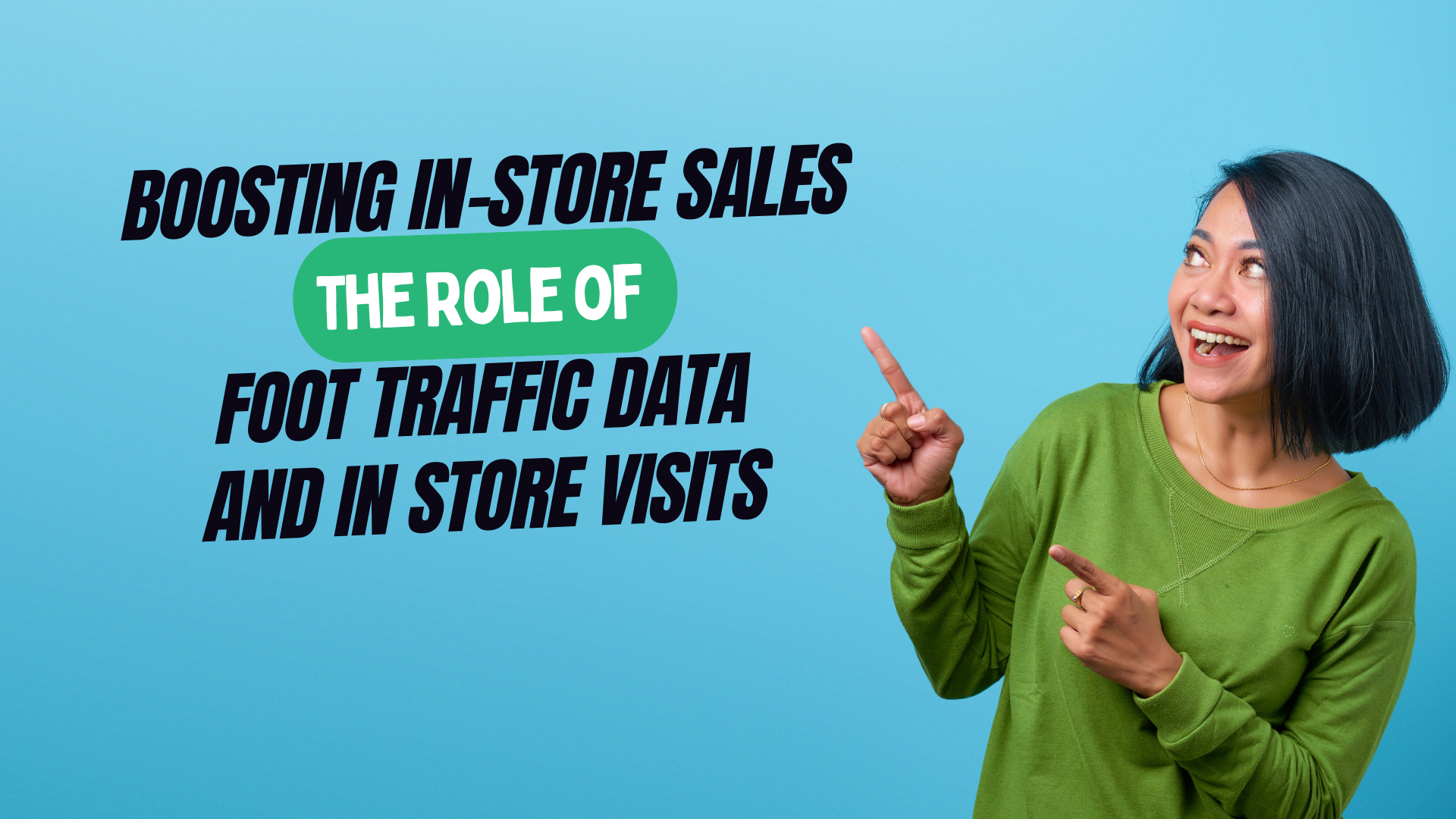In the rapidly evolving retail landscape, understanding and leveraging foot traffic data is crucial for boosting in-store sales. Foot traffic data provides invaluable insights into customer behavior, helping businesses optimize their operations, enhance customer experiences, and ultimately drive sales. In this blog, we’ll explore what foot traffic data is, how it’s collected, its key use cases, and how integrating digital and physical strategies can amplify its benefits.
What is Programmatic Display Advertising?
Foot traffic data refers to the number of people who enter a store or a specific location. This metric is essential for retailers because higher foot traffic generally translates to increased sales and revenue. However, it’s not just about the quantity of visitors but also about understanding their behaviors and preferences.
Methods of Collecting Foot Traffic Data
There are several methods for collecting foot traffic data, each with its advantages and limitations:
- Manual Counting: This is the oldest method, involving staff manually counting the number of visitors. While it’s simple and cost-effective, it’s also prone to errors and not feasible for large stores.
- Surveillance Systems: Motion-activated cameras and thermal sensors can automatically count visitors. However, their accuracy depends on the camera’s range, and they may require multiple installations for larger spaces.
- WiFi Tracking: This method tracks the number of devices connected to the store’s WiFi. While useful, it may undercount customers who don’t connect and overcount those who connect but don’t enter the store .
- Mobile Device Tracking: The most accurate method, this uses GPS data from customers’ mobile devices to track their movements. It provides detailed insights into customer behavior, such as dwell time and movement patterns within the store (SafeGraph) (EMB Blogs).
Key Use Cases of Foot Traffic Data
- Marketing Strategy Development: Foot traffic data helps businesses tailor their marketing strategies to increase visits and sales. By understanding peak hours and customer demographics, businesses can create targeted promotions and campaigns. For example, offering discounts during high-traffic times can boost sales and clear inventory.
- Staffing Optimization: Accurate foot traffic data allows businesses to schedule staff more efficiently. During peak times, having more staff on the floor ensures better customer service, while during slower periods, businesses can reduce staffing to save on labor costs.
- Store Layout and Product Placement: Insights from foot traffic data can guide the optimal placement of products within the store. High-traffic areas can be used for promotional items and bestsellers, while less frequented areas can be enhanced to attract more customers.
- Inventory Management: By understanding customer flow and purchase patterns, businesses can better manage their inventory. Knowing which products are popular and when they are most likely to be purchased helps in maintaining optimal stock levels and reducing waste.
Technological Tools for Analyzing Foot Traffic Data
Modern tools and platforms make analyzing foot traffic data easier and more effective. Business intelligence software, like ClicData, offers comprehensive data management and visualization capabilities, allowing businesses to gain deeper insights into customer behavior. Heat maps and other visualization tools can show how customers move within the store, highlighting popular and underutilized areas.
Integrating Digital and Physical Presence
In today’s digital age, combining online and offline strategies is essential for maximizing the benefits of foot traffic data. Here’s how digital integration can enhance physical store performance:
- Google Business Profiles: Claiming and optimizing your Google Business Profile ensures that potential customers can easily find your store, view your hours, and check product availability. This is crucial for attracting local customers who search online before visiting a store.
- Local Inventory Ads: These ads showcase products available in nearby stores, informing customers about the availability and encouraging them to visit the store. Highlighting options like curbside pickup and same-day delivery can further entice customers.
- Smart Bidding Strategies: Google’s Smart Bidding for store visits or sales helps businesses optimize their ad spend by targeting customers who are likely to visit the store. This ensures that marketing efforts are directed towards driving foot traffic and increasing in-store sales.
Challenges and Considerations
While foot traffic data provides numerous benefits, there are also challenges to consider:
- Privacy Concerns: Collecting and using foot traffic data must comply with privacy regulations. Ensuring customer data is anonymized and securing customer consent where necessary is crucial.
- Data Accuracy: Different methods of data collection have varying degrees of accuracy. It’s important to choose the right method for your business and continuously validate the data to ensure its reliability.
- Balancing Digital and Physical Strategies: Integrating digital and physical strategies can be complex. Businesses need to ensure that their online efforts complement their in-store strategies to provide a seamless customer experience.
Conclusion
Foot traffic data is a powerful tool for retailers looking to boost in-store sales and enhance customer experiences. By understanding and leveraging this data, businesses can make informed decisions about marketing, staffing, store layout, and inventory management. Integrating digital strategies further amplifies these benefits, ensuring that businesses can attract and retain more customers. As the retail landscape continues to evolve, staying ahead with data-driven strategies will be key to success.
If you’re ready to take your retail business to the next level with data-driven strategies, contact Data-Dynamix today. Our advanced analytics solutions can help you harness the power of foot traffic data to drive sales and improve customer satisfaction. Subscribe to our blog for more insights on retail strategies and data analytics.

